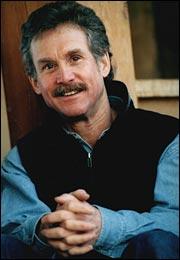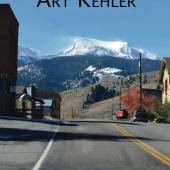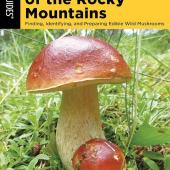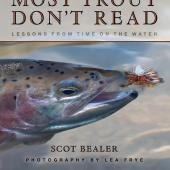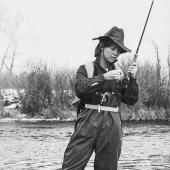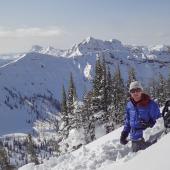Preserving the Plenitude
David Quammen and biological diversity.
In the dry and dusty hills southeast of Los Angeles, a battle rages over a little neck of land called Coal Canyon. Wedged between the 40,000-acre Chino Hills State Park and the massive 400,000-acre Cleveland National Forest, this tiny 32-acre parcel is the only undeveloped corridor linking two of the last remaining wilderness areas in southern California’s coastal region. The owner of the property wants to sell it to developers, and local conservation groups are fighting doggedly to prevent the sale. They argue that the value of Coal Canyon goes far beyond its sheer acreage, as this small expanse of earth is vital to preserving the ecological health and biological diversity of the two adjacent wildlands.
One of the weapons in the conservationists’ arsenal is a book entitled The Song of the Dodo: Island Biogeography in an Age of Extinctions. Hailed as one of the most important and influential conservation works of the decade, this book is being passed around to help explain exactly how and why fragmented, isolated "islands" of wilderness are at much greater risk of losing their rich variety of wildlife than are other, inter-connected ecosystems. The development of Coal Canyon would isolate both areas, and Song of the Dodo has illuminated, for many, the potentially tragic consequences of such fragmentation. The author of the book is devoted conservationist and longtime Bozeman resident David Quammen.
Quammen is quick to point out that he is a conservationist rather than an environmentalist. "People tend to lump the two terms together and call it environmentalism," he explains. "Environmentalism is about cleaning up a dirty environment, about having clean air and water, primarily for the sake of humanity. The very word ‘environment’ implies that nature is a background in which humanity stands at the center, that the landscape is nothing more than an ‘environment’ for humanity to inhabit. Conservation, on the other hand, is about biological diversity, about understanding the variety and richness of species that live on the planet in various ecosystems, and preserving as much of that as possible." It’s possible to have clean air and water, he adds, "and still drive most of the species on this planet to extinction."
Though Song of the Dodo is by far his best-known work, Quammen’s authorial arm reaches far beyond California’s conservation circles. His nearly 30-year literary career began in 1970 with the publication of To Walk the Line, a novel he wrote during his junior year in college. Since then he’s written two other novels, a collection of short stories, four non-fiction books, and hundreds of articles and book reviews. He has received numerous awards for his writing, including the New York Public Library / Helen Bernstein Book Award, the Lannan Literary Award, and an Academy Award for Literature from the American Academy of Arts and Letters. He is known by most readers, though, for his witty, intelligent articles in Outside magazine, particularly his natural science column, "Natural Acts," that ran from 1981 through 1995. Those and other magazine articles for publications such as Harper’s, Audubon, Rolling Stone, and Sports Illustrated twice won him the prestigious National Magazine Award. Many of his Outside essays have appeared in subsequent bound collections, most notably in his latest book, Wild Thoughts from Wild Places, published earlier this year by Scribner.
Not writing has never been an option for Quammen; like most good writers, his belletristic desire is inherent and overpowering. "It’s one of those things that sort of exists before reason," he says. "It was always there – at 10 or 11 years old, I was writing stories, little plays, and poems." An adept student, Quammen was admitted to Yale, where he studied literature under the famous novelist and two-time Pulitzer Prize-winner Robert Penn Warren. In 1973, after earning a graduate degree at Oxford, Quammen moved to Montana, "for the trout fishing." Like many writers, he paid his dues early on, working variously as a bartender, waiter, and fishing guide. A life-long interest in the natural world began to steer his work in a more scientific direction, and with his wife as consultant and first editor – she has a master’s degree in evolutionary biology – Quammen soon found his niche: natural science.
In the years that followed, Quammen researched, wrote, and traveled to imperiled ecosystems around the world. His concern for the natural world soon evolved into a passionate desire to preserve what he found to be one of the great wonders and necessities of our planet: biological diversity. Nature and its infinite variety must be saved, he decided, not only for its own sake but for that of humanity. If we continue to extinguish species and ravage ecosystems, he says, "we will be consigning thousands of generations of future humans to life on a planet that is lonelier, uglier, and more boring than the one we lived on. Thousands of generations of children will never see the raw beauty of an elk, or a bear. By destroying all of our wonderful and diverse ecosystems, we will be effecting a spiritual, aesthetic, and imaginative impoverishment of humankind."
When it comes to his own back yard, Quammen takes a less plaintive stance. "A lot of people fall in love with Montana," he explains, "and they think that the way to express that love is to instantly come up here and buy twenty acres in the foothills, cut a road, put up a log cabin, and then say ‘Ha! I’m a Montanan. I’ve seen A River Runs Through It and The Horse Whisperer and I’ve got a fishing license! I’m the next closest thing to Jim Bridger, or Henry David Thoreau.’ It’s all a charade, it’s all a fantasy, and it’s costing us a lot of landscape."
"Building a cabin, cutting a road – that’s not love, it’s date-rape," Quammen continues. "If you really love the landscape, live in town." And he’s a man who practices what he preaches; though he and his wife have outgrown their house on Bozeman’s south side, there’s no charming log cabin on a twenty-acre ranchette sporting a "Quammen" woodcut and a set of elk antlers. Rather, they’re suffering considerable inconvenience and expense by tearing down their old house and building a new one on the same lot, salvaging as much of the old lumber as possible.
Despite Quammen’s efforts, the destruction of Montana’s natural landscape – and that of the rest of the world – continues. As wildlands and their ecosystems continue to be carved into ever-shrinking fragments, Quammen’s prediction for biological diversity becomes increasingly grim. "But that’s not to say that we should despair, and throw up our hands," he says, "we can do something about it. We can limit our impact on the landscape, limit the amount of deforestation, halt the destruction of wetlands, and stop over-fishing of the seas." It is through endeavors such as these, he believes, and battles like the one at Coal Canyon, that we can insure the survival of the natural world and its vast community of life.
This article originally appeared in The Tributary, a now-defunct alternative newspaper for southwest Montana.



